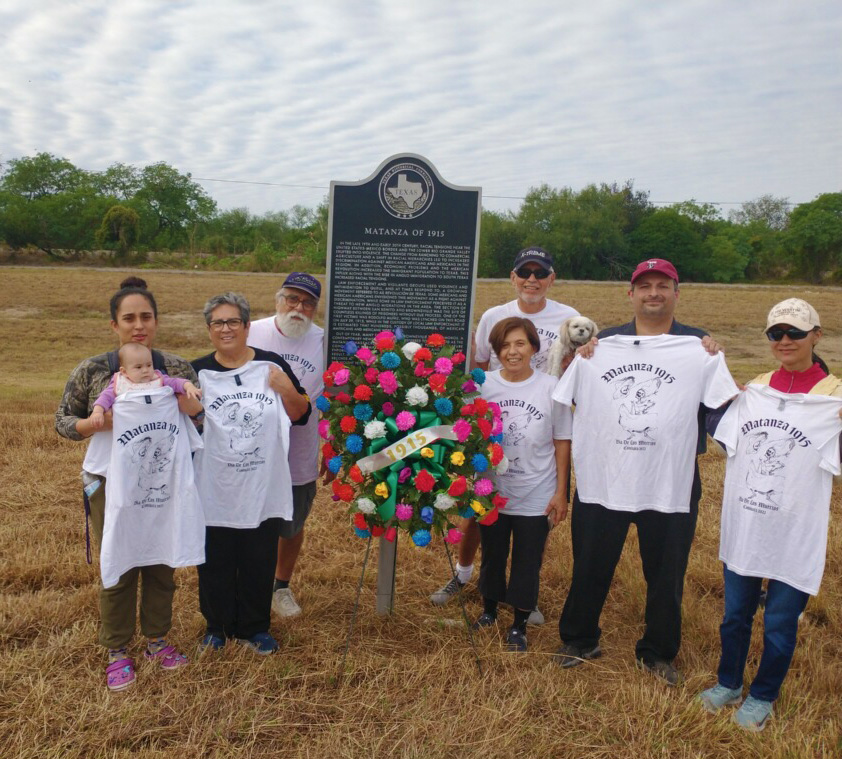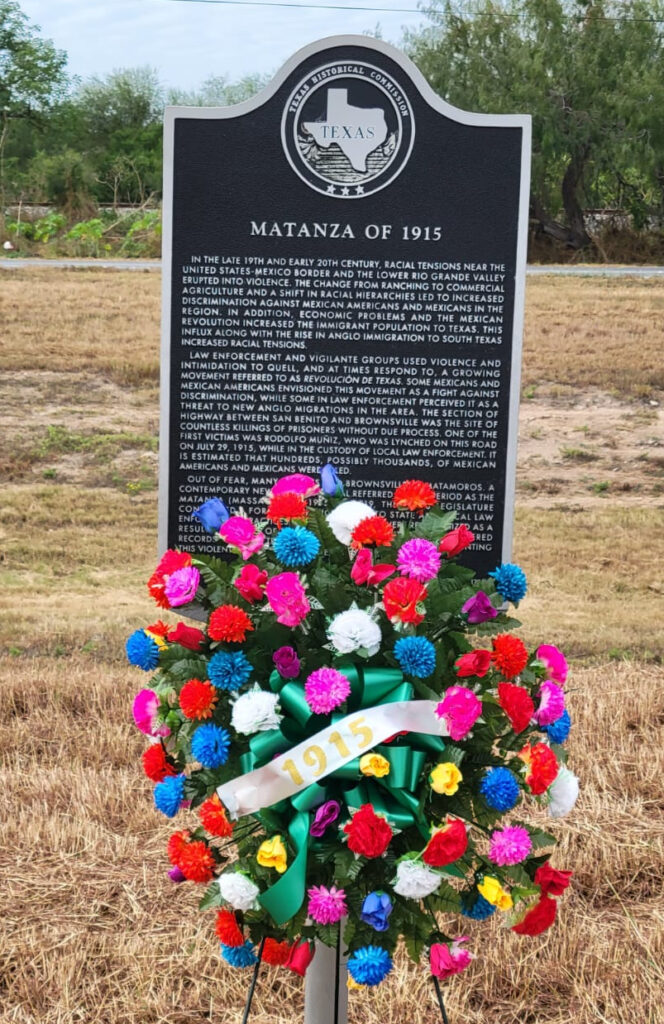By Juan Carmona
It was a crisp cool morning in the Rio Grande Valley as I came into San Benito, Texas. I was there to join La Caminata’s march to commemorate those lost to an event known as La Matanza. In 2017 Refusing to Forget led the effort to place a historical marker just outside the city on the way toward Brownsville. The spot chosen was where Rodolfo Muniz was lynched and it was on the road between the nearby town of Harlingen and Brownsville where many Mexicans and Mexican Americans were “evaporated” a term used by the Texas Rangers to describe the disappearance of their prisoners/victims. I was there in response to an email sent to some of the Refusing to Forget (RTF) members advertising the march from organizers Ricardo Madrigal and Janie Alegria. The walk was to begin from Heavin Park to the historical marker at the Southbound Exit 16 rest area, a walk of just over 3 miles.
I arrived at the park in the center of the town and there met up with one of the organizers Ricardo and a fellow marcher Rogelio Nunez. We waited there til 9 am for others to join and then made our way toward the marker. The route would take us down Business 77 east and then south down to the rest area where the marker sits. The walk took us around an hour and it was along the way that I was able to chat with Mr. Madrigal and Mr. Nunez. Mr. Madrigal is an attorney who in the past had worked for the Office of the State’s Attorney General and had run for office in the past. I asked Ricardo what brought him to organize such a march and he explained to me that it was the culmination of 3 things. A visit to Mexico City in which he learned in detail about the tradition of Dia De Los Muertos a tradition that has been slowly growing here in the United States. He also visited the Bob Bullock Museum’s temporary exhibit “Life and Death on the Border. 1910-1920” which was organized by RTF and won several awards. He related to me that until he saw the exhibit he had no idea of this history and he had been a resident of the Rio Grande Valley his whole life. It was this realization that made him realize that something had to be done to develop an awareness of this history, especially for our youth.
So he organized the walk naming it Caminata (a hike) a way to walk and reflect on the violent history of our region and how it has long been kept from us, not to mention the fact that it was state-sanctioned, committed by agents of the state with the consent and protection of elected leaders, like the governor. It is certainly a dark spot in our state’s history but without the public’s knowledge of the very rhetoric used back then to justify the violence, it will be continued to be used to incite hate and violence.

Along the walk, I was also able to speak to Mr. Nunez who is one of the organizers of Narciso Martinez Cultural Arts Center’s Conjunto Festival. He spoke to me about why the festival had to move to Los Fresnos when it had been founded and always held in San Benito at the Cultural Arts Center. The move came after the city would not budge on charging them over $10,000 to hold the festival. The walk took us past numerous political signs for the upcoming elections and the conversation turned to local politics and what looked like a Republican insurgency in the latest election. This then took us back to the subject of education and the need to really understand our past, like the reason we were on the march and the need for a recognition of fuller accounting of our history.
We finally reached our destination about an hour after we started and there we were met by a few other people who could not make the march but wanted to honor those that were killed during La Matanza. They had set up a tent, a cooler with some bottled water, and some fruit. As we marched to our destination Ricardo’s wife drove behind us in their SUV, in which they had brought a reef to hang below the marker. We gathered together as a group and were given shirts to commemorate the hike with an image created by late artist Sam Coronado. I was asked to read the inscription on the marker to the group, after which I provide some more historical context to the time period. We gathered together for pictures and shared contact information so that we might all work together to grow the march and awareness of the history of La Matanza.
As I drove back home, I began to think of the strength of planting seeds. In 2017 RTF placed the marker for La Matanza in San Benito and in 2016 from January to April the RTF-sponsored exhibit ran at the Bob Bullock Museum both of which were not just efforts to commemorate but to educate. Years later I find myself walking with a group of people led by an individual whose exposure to both of the above was moved to find a way to honor the history of our people. I then began to wonder how many more seeds have borne fruit and the need to plant more.

